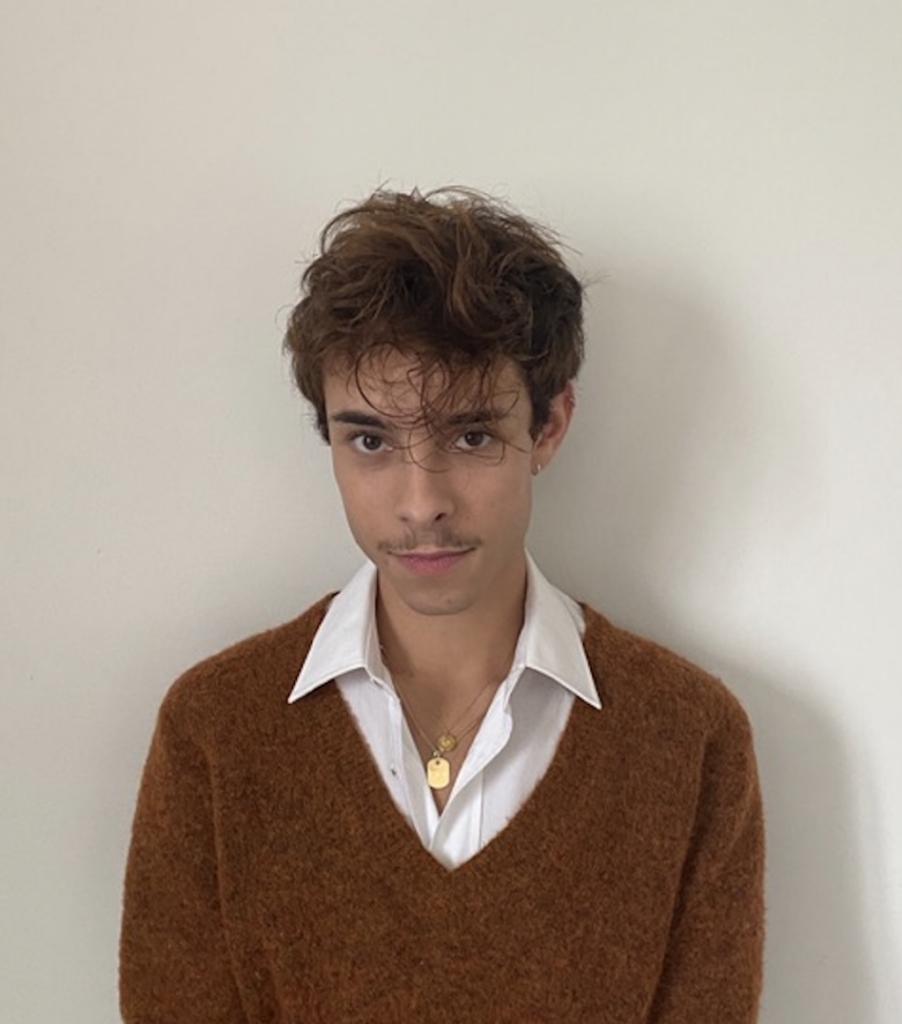At the start of the new year, we give the floor to Tristan Hinschberger, a student at the École du Louvre who is writing his thesis on the subject of perfumery and the decorative arts in the early 20th century.
FdD Per Fumum: What led you to take an interest in perfumery and the decorative arts, particularly the early 20th century?
Tristan Hinschberger: “I’m interested in perfumery first and foremost out of personal taste, because I’ve always loved perfume and I’m also sensitive to its history and the history of scents. I also really enjoyed the decorative arts courses I took during my bachelor’s degree at the École du Louvre. It was last year, during my Master 2, when I was asked to work on the Perfumery Pavilion at the 1925 Decorative Arts Exhibition in Paris, that I really made the link between the decorative arts and perfumery. I understood the exhibition’s ambition to make perfumery an art form in its own right. Expanding on this question of the 1925 Pavilion, I focused on the early 20th century, because from an economic, social and political point of view, I find it a particularly interesting period with many changes. For me, it’s a key period for contemporary perfume today because it becomes artistic, and the whole point of this research work is to show why and how perfume really became an artistic object at the beginning of the 20th century.“
FdD Per Fumum: What are the main themes and stages of your study?
TH: “My study will begin with the theme of the birth of modern perfumery, which is often associated with Guerlain’s Jicky. This seems to me to be the right moment to begin my subject. There are a few key dates that define the major periods of the subject. Like René Lalique’s arrival in the world of perfumery in 1909 with the scarabée line, which was created for Piver and which, according to some authors, is the beginning of artistic perfumery.
Another major point to address is Paul Poiret in the perfume landscape. It was he who gave perfumery its letters of nobility, notably through partnerships with contemporary artists such as Raoul Dufy and Marie Vassilieff. I think the figure of Paul Poiret is particularly important for the history of fashion, of course, but also for the history of perfume, and that’s something I don’t think is talked about enough. He paved the way for other major couturiers to forge flourishing partnerships with other contemporary artists.
Another major point is the 1925 Decorative Arts Exhibition, which I worked on last year. For me, it’s the apogee of this aesthetic research into perfume and this new way of presenting it. Then in 1927, there was the Salon de la Parfumerie, which also took up the new codes of perfumery with a completely new aesthetic approach. I’m thinking of stopping my research in 1937 at the Exposition Internationale des Arts Décoratifs, as this seems to be the last major exhibition for perfumery with its own pavilion dedicated to perfumery.“
FdD Per Fumum: How do you intend to go about your research?
TH: “First of all, I’m going to do a “general overview”, involving a lot of reading. Then, I’ll go to the national archives at the BnF to gain access to house archives, advertising documents or documents from the women’s press and the press in general.

I will also approach the archives of various institutions, such as the Musée des Arts Décoratifs and the Musée de la Parfumerie in Grasse. And I’ll also be doing research directly in the perfume houses of the time, such as Guerlain or d’Orsay.“
FdD Per Fumum: Why choose two universal exhibitions (those of 1889 and 1900) and an international exhibition of decorative arts (that of 1925) as examples or sources of work?
TH: “For me, it was at the Universal Exhibitions that French perfumery became institutionalized. It’s a time when it shows itself to the world, when it demonstrates its aesthetic, scientific and chemical advances. It tried to compete with other nations in a particularly intense and stormy political and social context between the end of the 19th and the middle of the 20th century. So, I think these 3 exhibitions are particularly important because they show the evolution of taste in decorative art in the space of just under 35 years.
This evolution in taste can be seen in the studies, the bottles and the stands of the companies present at the 1889 exhibition. The same year was marked by the birth of Jicky. 1900 was the first time we saw a perfume stand designed by an artist not associated with the perfume industry. It was Hector Guimard for the Millot stand. As I said earlier, 1925 marked the apogee of the perfume pavilion’s aesthetic research. It was one of the most-visited pavilions at the show, and one of the most successful. So these 3 dates seem to me particularly important for understanding the evolution of taste and the evolution of perfume as a decorative art.“
FdD Per Fumum: What results do you hope to achieve with this study?
TH: “I hope to be able to show that the study of perfume is important because it’s also a study of taste, an artistic study in its own right that calls on many other media, such as advertising, engraving or cartonnage. I believe that the study of perfume, but not only, is a study that deserves to be as important as the study of fashion, for example. So I want to show why perfume could be considered a decorative art in its own right at the beginning of the 20th century, and explain why it is still considered a decorative art today.“